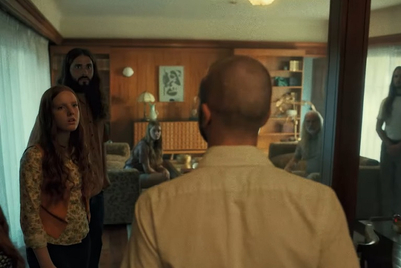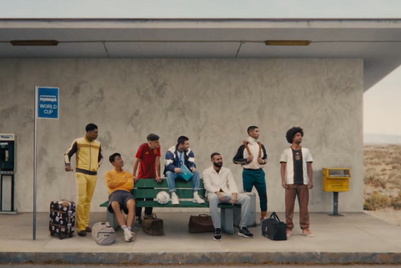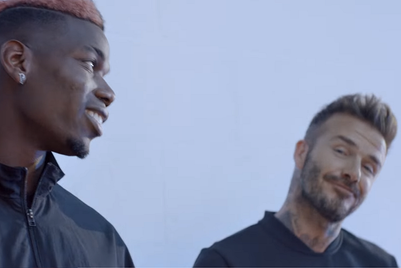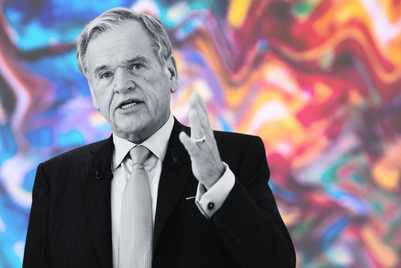
It’s the World Cup. But different. Kicking off on 20 November, this year the beautiful game will be competing with Christmas for our attention. Fans will be cooped up indoors on cold winter nights watching the action, rather than in sun-kissed beer gardens. And, worst of all, this will be set against a bleak backdrop of economic anxiety. Football may have returned home during the summer, with the England Lionesses proudly lifting a trophy after getting one over old foe Germany, but the challenges of the Qatar tournament loom large like a burly back-four readying themselves for a free kick.
For brands looking to show up around the World Cup, there are other concerns about being associated with Qatar. The delivery of the tournament to a tiny nation with a smaller population than Birmingham and temperatures that hover well above 30 degrees Celsius has been mired in accusations that infrastructure (including eight stadiums, new metro links, roads, accommodation and more) has been built on the backs of labour working in extreme heat and poor conditions for as little as $1.50 per hour, and consequential deaths. There are also concerns about the awarding of the tournament, amid allegations of corruption, and Qatar’s human rights record for its LGBT+ community (homosexuality is outlawed). The impact of social media has heightened brands’ apprehension. Greater scrutiny over the behaviour of corporations has created caution about “how and when” they go to market.
The conundrum facing many advertisers – in particular retailers – is that they can ill afford not to show up during the World Cup, which, typically, attracts the largest TV audiences of any peacetime event, because of Black Friday and Christmas.
However, as Gemma Major, MediaCom’s joint head of AV, points out, it could all come down to cost. “You’ve got your kind of core set of advertisers who will advertise in the World Cup, regardless of when it is and even where it is, because they want to be around that live sports content and the massive audiences that are there every time,” she says.
Although linear TV audiences have been in gradual decline in recent years, a peak audience of 27.5 million tuned in to watch England lose to Croatia in the semi-final of the 2018 Russia World Cup, the largest England football TV audience in history (the game was also streamed 3.9 million times on the BBC iPlayer), with Colombia vs England from the same tournament taking up second place, boasting an audience of 23.6m.
“You’ve then got the sort of dichotomy that brands like Tesco might be in, that’s one of our key retail clients at MediaCom,” Major adds. “They need to be on TV to support Christmas, they want to be on for Black Friday, which is aligned with the start of the World Cup [England plays the USA that evening], but they don’t want to pay the rates that are associated with football.” This, coupled with advertisers being urged by ITV to buy a male demo, Major argues, creates “an additional premium before you begin to access eyeballs”.
“I think that there’s a lot of decisions still to be made by brands, whether they are advertising at all,” she says. “The economy is quite a different landscape this year than it has been and people are having to be much more considerate as to what they advertise. Are we going to see those big Christmas messages? You know, the John Lewises and the like, which feels very luxurious at this point in time where you’ve got the cost-of-living crisis.”
ITV has responded to concerns about cost by offering brands a 20% discount on World Cup airtime for games on ITV’s core channel. Mark Trinder, ITV’s director of commercial sales and partnerships, says that the aim of the discount was to make the World Cup more accessible, especially as it is being held during the busy pre-Christmas advertising period.
“We want as many brands as possible to be able to get involved, whether big or small, regional or national,” he says. “So we’re creating a range of opportunities and support to make this a Christmas World Cup for everyone – as accessible and inclusive as possible.”
On the point about inflation, Trinder points out that TV impacts are likely to be spread throughout the day during the tournament, because Qatar is not running two games at the same time until the later rounds of the tournament when they become mandatory for competition purposes. This is a departure from previous World Cups.
“Games have been doubled up at 7pm in other tournaments, so the byproduct to that is such a spread across the day, and obviously that that will materially spread the impacts and viewers,” he says.
“We’re not anticipating inflation against these male audiences in the World Cup. That’s based on the volume of impacts that are going to be in the market. And, very importantly, it’s not just the World Cup games, it’s also our entertainment genre. I’m a Celebrity… will start a little bit earlier. The Voice moves into Q4 and programmes like Ninja Warrior are in there plus our slate of dramas.”
Nonetheless, premium games will still cost advertisers a pretty penny. The first of these will be England’s battle with the USA at 7pm on 25 November (Black Friday). The price for 30-second spots during key breaks (such as the half-time commercial break) is hovering around the £550,000 mark, while for non-key breaks the price falls to around £265,000. For non-premium fixtures that don’t involve home nations, the range drops to £70,000 to £150,000. ITV has secured Google Pixel and KFC as broadcast partners for the tournament.
Inflation may be on the minds of some marketers and media buyers, but Trinder reckons it is the creative and messaging that is the biggest question he has observed from brands looking to present during the tournament.
“The World Cup finishes on 18 December, seven days before Santa arrives,” Trinder says. “The theme that I’m picking up, without breaking the code of confidence, is that a number of brands, including supermarkets and quick-service restaurants, are looking at creative that shows people getting together, which touches upon Christmas, the World Cup and even Bonfire Night prior. You will see some contextual creative that’s related to football, the overarching theme about people getting together, inviting friends and family over to celebrate Christmas and watching football will be big.
It is true that the creative challenge is certainly top of mind for brands, including retailers, heading into the Christmas period. John Lewis & Partners, famous for its festive campaigns, never gives away details about its Christmas ad. However, a spokesperson says, rather cryptically: “We know many of our customers will want to cheer on home teams… and our business is planning for this.”
What exactly could this mean? Could we actually see a game of two halves in this year’s fourth quarter or will festive football ads reign supreme? Havas Cake’s creative and strategy partner, Lex Deasley, reckons sports and lifestyle brands will be fighting tooth and nail with retailers for attention. “Hopefully we don’t see too many brands trying to clumsily bundle the Christmas and World Cup together – Christmas isn’t the time for two-for-one deals – or co-opt the cultural zeitgeist by lazily sticking a bunch of footballers in their Christmas campaigns,” he says.
“The emotional and accessible trope of traditional Christmas goodwill will rub up for the first time against the opposing theme of universal competition, creating the environment and potential for some original and exciting work. Or, at least, a progression from the media conveyer belt of generic ‘feelgood’ mush and food porn. We see the opportunity being to really double down on creating something meaningful in culture, which the audience will care about and love and want to spend time with. Surely that’s the spirit of Christmas?”
Omnicom Media Group’s sports marketing agency, Fuse, has worked on several football campaigns in the past, including at the recent Uefa Women’s Euro 2022 tournament. UK and EMEA chief executive Louise Johnson says that advertisers who win the battle for creativity will get the most joy from this winter World Cup.
“Some of the Western brands will go a little bit more on the values of football, that excitement and energy and coming together,” she adds. “I think that’s what we’ll see a lot from the official partners. From non-official, I’m sure we’ll see something more bespoke. The Nikes doing something ambitious and slightly different. I wonder whether any of the non-World Cup affiliated brands will do something a little bit more daring and speak out more around what’s going on in Qatar – that would be something to watch out for.”
As England makes its final preparations leading into the tournament, brands that have not yet begun their festive football season strategies, media plans and creative executions will be left behind. If there is one thing World Cups guarantee, it is millions of eyeballs across TV, social media (Twitter is an ITV partner), specialist digital media, such as Goal.com and Copa90, and other channels.
Sports marketing and advertising executives speaking to Campaign for this feature agree that brands can ill-afford to avoid this World Cup Christmas period. Those that score the most goals will need to dribble past the controversies surrounding Qatar, tackle the tone and messaging conundrum, line up clever and creative media strategies, and execute a one-two through huge moments of popular culture.
The England women’s Euro 2022 success has only heightened the anticipation and expectations of the men’s national side. Brands have a unique chance to come up with a supreme strikeforce of creative that tackles Christmas, Black Friday and football – or selects the right environment for their messaging. Which brands will get their tactics spot on, go to extra time, and which will be pulled up for straying offside? There is much to play for.
(This article first appeared on CampaignLive.co.uk)


.jpg&h=334&w=500&q=100&v=20250320&c=1)

.jpg&h=334&w=500&q=100&v=20250320&c=1)

.jpg&h=334&w=500&q=100&v=20250320&c=1)



.jpg&h=334&w=500&q=100&v=20250320&c=1)
.jpg&h=334&w=500&q=100&v=20250320&c=1)




.jpg&h=268&w=401&q=100&v=20250320&c=1)
.jpg&h=268&w=401&q=100&v=20250320&c=1)


